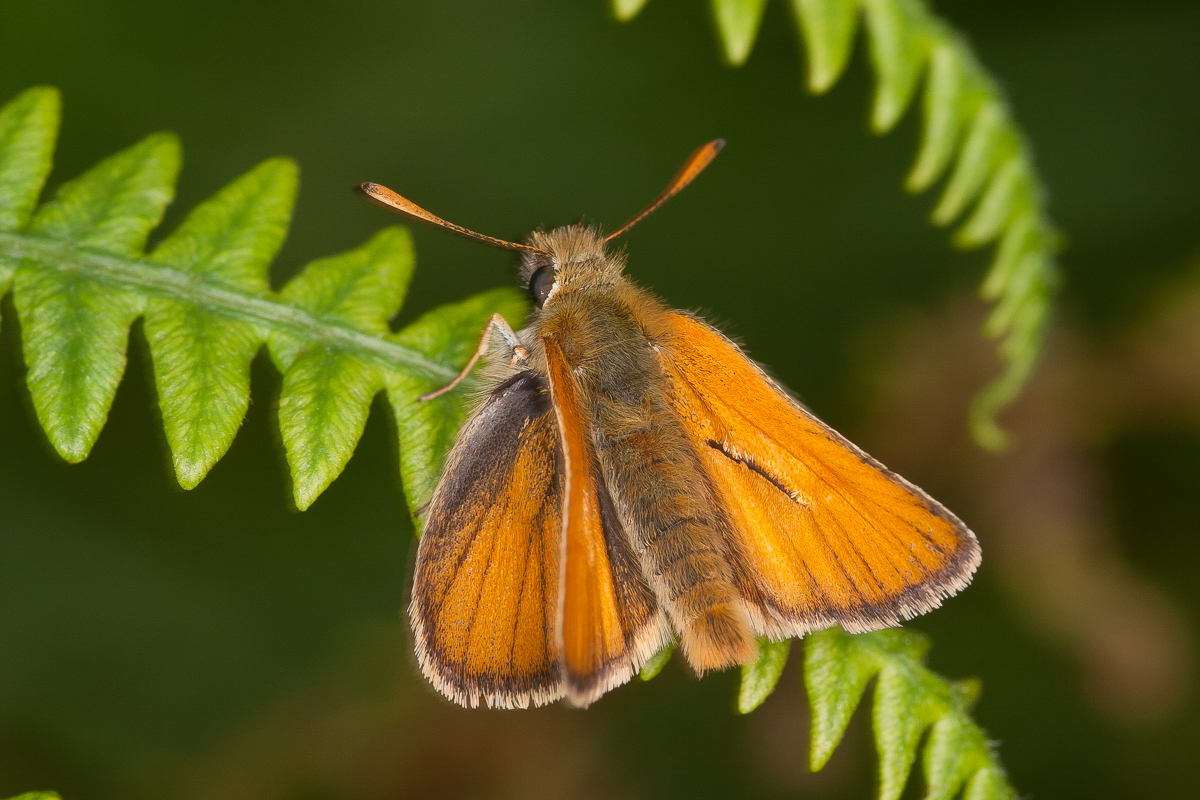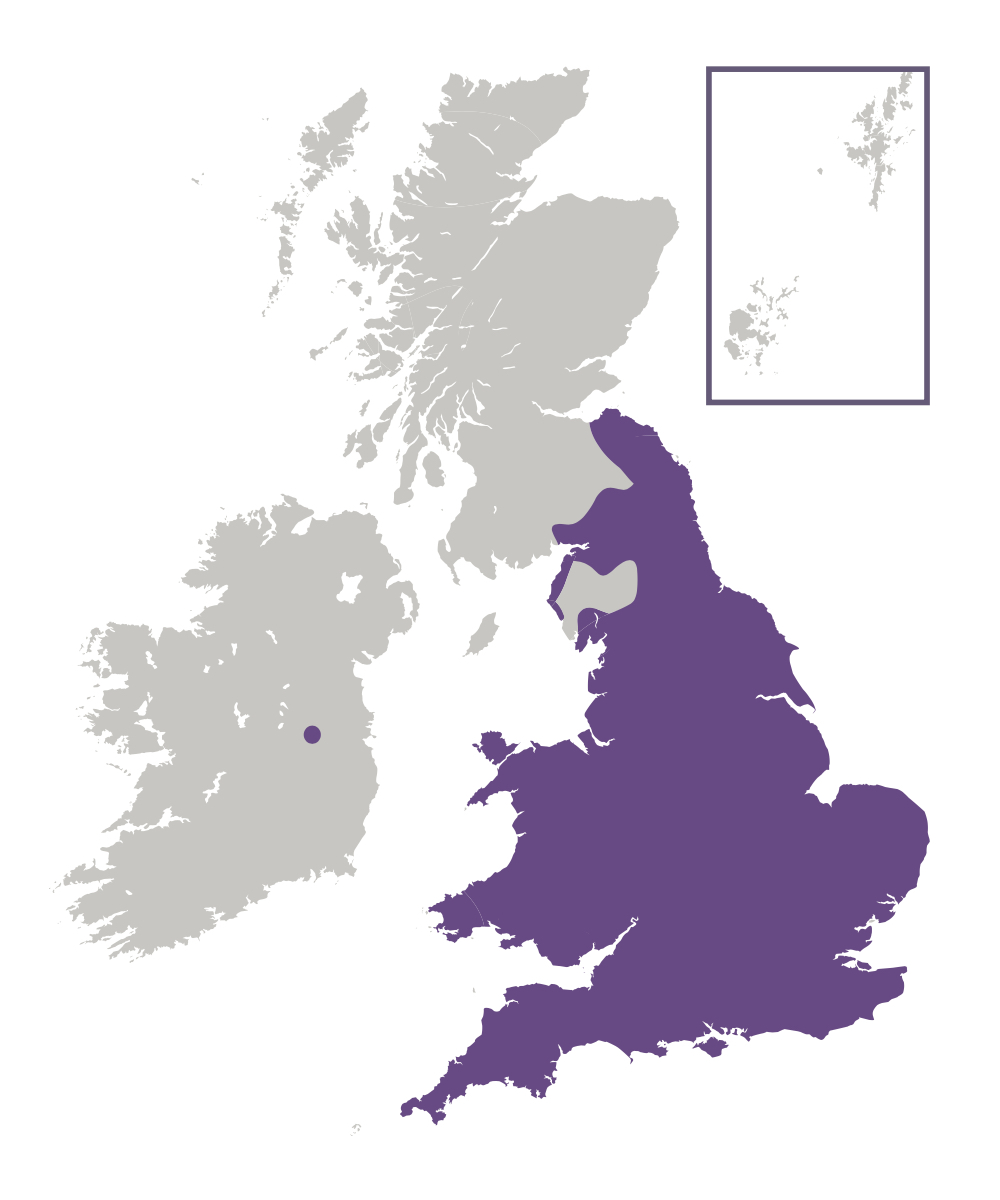
Photo © Peter Eeles
This golden skipper is often found basking on vegetation, or making short buzzing flights among tall grass stems. Despite its name, 4 skipper species found in the British Isles are the same size or smaller than the Small Skipper. The male is distinguished from the female by the sex brand on its forewings, which is a slightly curved line of specialised scent scales. This butterfly is widespread on the British mainland, south of a line running between Westmorland in the west and North Northumberland in the east. It is absent from Ireland, the Isle of Man and the Channel Islands. This species lives in discrete colonies of both small and large populations.
The male Small Skipper is territorial, and can be found resting on suitable perches from which it intercepts any passing butterfly. The male is the more active of the two sexes; females being more sedentary. Females exhibit unusual behaviour when egg-laying. The female will alight on a dead stem of Yorkshire-fog, and then move backwards down the stem, probing the sheath as she moves. When a suitable opening in the furled sheath has been found, she will lay several eggs inside. Both sexes are nectar-loving, and can be found visiting flowers such as Thistles and Red Clover.

This species inhabits rough grassland, where tall grasses grow, and may occur on roadside verges, beside hedgerows, on overgrown downland, in woodland clearings and along woodland rides. The main foodplant is Yorkshire-fog, a common grass in the British Isles, although other grasses are also used.
Adults feed primarily on Betony (Betonica officinalis), brambles (Rubus spp.), Common Bird's-foot-trefoil (Lotus corniculatus), Common Fleabane (Pulicaria dysenterica), dandelions (Taraxacum spp.), Devil's-bit Scabious (Succisa pratensis), hawkbits (Leontodon spp.), knapweeds (Centaurea spp.), Red Clover (Trifolium pratense), restharrows (Ononis spp.), Sainfoin (Onobrychis viciifolia), Selfheal (Prunella vulgaris), thistles (Carduus spp. and Cirsium spp.), vetches (Vicia spp.) and Wild Marjoram (Origanum vulgare).
The primary larval foodplant is Yorkshire-fog (Holcus lanatus). Cock's-foot (Dactylis glomerata), Creeping Soft-grass (Holcus mollis), False Brome (Brachypodium sylvaticum), Meadow Foxtail (Alopecurus pratensis) and Timothy (Phleum pratense) are also used.
